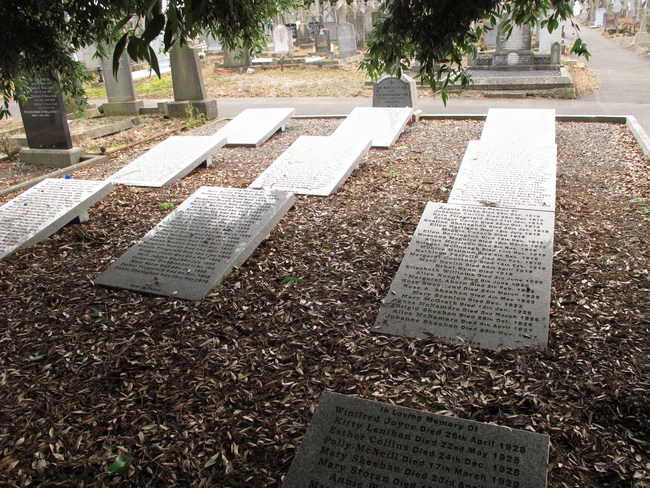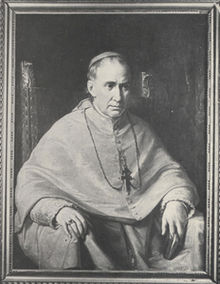Magdalene Laundries and the Power of Shame
Bock the Robber
You think I joke? You think itís stretching it a bit to describe us as famine survivors, with our well-fed bellies and our ostentatious double-breasted houses (even if we are a bit down on our luck these days)? Think again. The Irish famine is but a blink away in history yet it shaped every last thing about who we are today. There are few degrees of separation: my grandfather knew many people who lived through the famine. They swaddled him as a baby and perhaps they bounced him on their bony old knees. They told him stories in his cot, but one tale they never told was the tale of how they survived when so many did not. This was not a tale to be passed down the generations, because it carried not one, but two great shames embedded in its broken heart. The first was the shame of survival and the second was the shame of oppression. The first gnaws at the soul and uses a different name when it walks out in the daylight. That name is Guilt. The second one chews away at the very fabric of our being, because now we know what it is to be nothing. Now we know what the boot feels like against our neck as we lie in the mud, and we spend the rest of our time on earth in a ceaseless effort to become something again. The best of us succeed by letting go of the pain, the humiliation, the shame, and by finding a place inside ourselves where we can live at peace. Most of us are not that wise and so we live out our days balancing one silence against another, relieved and enraged, angry towards those who shared our pain as much as those who inflicted it, and determined never again to speak of what we know. A few on the dark side understand the true nature of shame and know even better its antidote: contempt. Hereís the paradox for them: there is only one path away from shame but itís both true and false at the same time. You will no longer feel shame if you stumble on the secret of not feeling anything, but you can do better than this. If you can feel superior to someone, if you can feel true contempt for some poor wretch, then you are no longer at the very bottom of the shame hierarchy. You are now one step up. It was no accident that the old people used to describe certain characters as three haípence looking down on a penny. Thatís human nature the world over, but letís look at Ireland in the mid-nineteenth century. Crushed. Demoralised. Three to four million native Irish speakers removed at a stroke. Its culture eviscerated by emigration, starvation and disease, thanks to a government in London that believed in tooth-and-claw laissez faire economics. A government whose only interest was the wealthy merchant classes, and the devil take the hindmost. In the words of Francis Spaight, a Limerick businessman whose shops continued in business until the 1980s, I found so great an advantage of getting rid of the pauper population upon my own property that I made every possible exertion to remove them Ö I consider the failure of the potato crop to be the greatest possible value in one respect in enabling us to carry out the emigration system We made the mistake of thinking the policy was anti-Irish when it was simply anti-poor, and by making that mistake, we lost the opportunity to throw off the shame of oppression. Instead, we immersed ourselves in a ferment of resentment when we needed constructive anger and we developed our most outstanding national characteristics, self pity and infantilism.
This Ireland of shame, humiliation, confusion and bad self-esteem was perfect for the arrival of a man like Paul Cullen, Irelandís first cardinal, who landed in 1850, in all his pomp and importance, while people still starved by the roadside and evictions were rampant as landlords exploited the opportunity to clear their lands of the poor, so that they could consolidate the holdings into the hands of strong Irish farmers willing to breed livestock instead of cultivating grain. Beef for Britain. Cullen understood well his status as a prince of the Church and he wasted no time reminding the locals of his power. The Synod of Thurles attracted thousands from all over the land, by train, by cart, mounted and on foot. The gentry, of course, commandeered the upper windows to view the procession of clerics in all their glory, an incongruous spectacle at a time when thousands were still dying of starvation in ditches or of typhoid on trans-Atlantic coffin ships. These men of Christ were not men of Charity. Their god was power and Cullen intended to impose it at every opportunity. The pre-Famine hedonism of the Irish was to be replaced by a rigid ultramontane clericalism with Cullen at its head. In future, if anyone thought of dancing, there would be a stern young priest standing by to make sure they kept their arms by their side. Over the next twenty years, Cullen devised every manner of religious trick. He invented Benediction and the First Fridays. He insisted that priests should be called Father, not Mister. He established and supported religious orders throughout the country, populated by young men and women imbued with his new religious fervour. If anyone didnít know shame before Cullen arrived, they knew it now, for he brought a new flavour of shame to a people replete with the first two kinds. Cullen taught the Irish to be ashamed of sex. To be ashamed of themselves and everything that made them an individual. As if things werenít bad enough, Cardinal Paul Cullen made an entire country mentally ill. Cullen taught the Irish people self-hatred, while at the same time elevating the vanguard of contempt to the centre of influence with the support and approval of the London government. Whatever kept the people passive suited their agenda. The Magdalene asylums thrived under Cullenís reign, as the various orders of nuns blossomed and the Irish sense of self-worth declined, to be replaced by a rigidly-applied set of Catholic rules, based on a hatred of sex. Itís no accident that Cullen was so successful in his efforts to establish clericalism in Ireland after the Famine. He provided a means of sublimation and he also provided a displacement activity to a nation so baffled by its own subjugation and so horrified at what neighbour had done to neighbour, that nobody had either answers or even words to explain. Instead of thinking clearly about the horrors that had occurred in living memory, our forebears now had the easy escape route into unthinking piety, the option of religious mantras like the Rosary instead of difficult choices like confronting what had happened. It was a false route out of our collective shame, but it was seductive and it worked. For those who needed the vindictive solution, the Magdalene Laundries provided the answer, because here was a repository of human beings who had been dehumanised and who were easy to feel contempt for. Shame had its antidote in these places for anyone with a craving to feel contempt, as most of these nuns did. As a child, I never understood why my mother disliked nuns so much. I didnít know what she meant when she used the word frustrated to describe them, but of course I see it clearly now and at the same time I feel less inclined to judge. Yes, itís true that the nuns were emotionally cruel. Itís true that they humiliated and dominated their prisoners, but then you have to ask the overwhelming question: what were their stories? Taken at the age of twelve or thirteen, before puberty, soaked in Cullenís Catholic ideology, infused with a puritanical loathing of the body and driven mad by the requirement to suppress their own desires as they grew into maturity, is it conceivable that some of them would not have become bitter, twisted and cruel? What is a Magdalene laundry if not a place where an emotionally-damaged nation can put all its shame and forget about it? The story of the Magdalenes is the story of Ireland from the 1850s to the present day and if we approach it properly, it offers us the therapeutic opportunity to really look at ourselves and see what made us who we are. If we use that opportunity well, we might even be able to work out how to escape the evil inflicted by Cullen and go back to the sort of people we used to be. The people we pretend to be in all our tourist literature.
|
.
Any original material on these pages is copyright © BishopAccountability.org 2004. Reproduce freely with attribution.

